This section describes the recommended delivery mechanisms to be used to achieve the outcomes of WQIP:2015, with appropriate funding and landholder support. While it has been separated into ‘Agricultural’ and ‘Environmental’ delivery sections, wherever possible on-ground projects should seek to achieve multiple outcomes. The identification of sites that are likely to achieve the best agricultural and environmental outcomes can be obtained through evaluating the outcomes of both the agricultural and environmental prioritisation processes undertaken for WQIP:2015.
Agriculture
Running the different prioritisation approaches of prevention/proactive, remediation and system change, allows for a more tailored approach and ensures that engagement and effective outcomes can be achieved both over the short term on and on a longer-term time scale. It also allows critical information to be integrated. For example, the soils mapping related to prone to gully formation is useful in a proactive strategy however the gully mass image is more useful for the remediation and systems change approaches. The recommended strategies are described below.
Prevention / Proactive
This is a strategy regarding providing extension and engagement to landholder who are on land types that are prone to gully formation, or low cover due to their location. This approach would include the following components:
- Ground cover (Terry Beutel DAF)
- Climate risk and time lags (Matt Pringle)
- Adoption of Management (P2R)
- Property Size (Existing data set from Fitzroy WQIP:2015)
- Soil Type (Based on Shawn Darr’s Source Catchment mapping, DNRME)
- Cost (focused only on extension)
- Load exporting (P2R Source Catchment modelling)
- Marine Exposure (Scientific Consensus Statement Chapter 3)
Remediation
This is based off projects that have no private benefit only public and are often large scale streambank or gully remediation works. This approach is for programs which fund large scale earth works on large waterways such as streambank remediation on the Fitzroy in Yaamba. These remediation approaches however must also consider to the maintenance of these works and how this will occur with the landholder. The approach could initially use the Reef Trust Partnership Investment Pathways project completed by Alluvium (2019), and then further build on this with additional data sets such as:
- Climate risk and time lags (Matt Pringle)
- Program, Maintenance and capital works costs (past projects or current proposals)
System change
This is based off achieving a number of changes over time with landholders and it is a recommendation based off the Impact and Extension report in conjunction with the most recent science and the regulation. There will be a number of landholder who require intensive one-one-one over a longer period of time and they may also need some form or incentive to implement the changes as they go. This approach will have to consider the
following components:
- Ground cover (Terry Beutel DAF)
- Climate risk and time lags (Matt Pringle)
- Adoption of Management (P2R)
- Property Size (Existing data set from Fitzroy WQIP:2015)
- Soil Type (Based on Shawn Darr’s Source Catchment mapping, DNRME)
- Cost (based off extension, and incentive)
- Load exporting (P2R Source Catchment modelling)
- Marine Exposure (Scientific Consensus Statement Chapter 3)
Grazing management practices have been a key focus for all past investments and continue to be the vehicle used to assess the effectiveness of an intervention in Paddock to Reef modelling. Some management practices are more effective at reducing pollutants, some are less costly, some have shorter time lags to be effective (Meals et al. 2010; Bartley et al. 2014) some have higher rates of adoption by farmers (Feather and Amacher 1994; Greiner et al. 2009; Greiner 2015; Rolfe and Harvey 2017), some involve lower risks of success or interruptions (Prokopy et al. 2008; Doole and Pannell 2011; Rolfe and Gregg 2015), and some achieve reductions in the most important marine catchments. None achieve all of
these priorities together, forcing an appraisal of which combinations are preferred (Naidoo et al. 2006). Star et al. (2019b) have explored this to some extent in the evaluation of current and past water quality investments in the Fitzroy NRM region to identify a range of options that might be suitable within the management strategies identified above.
Environment
Projects in the environment category should focus on the high and very high priority Neighbourhood Catchments in order to achieve maximum return on investment and increase the benefit to the Reef through the improvement of ecosystem services, remediation of barriers to fish passage, and restoration and improvement of high value wetlands. The ultimate project direction will depend on funding criteria and associated outcomes set by funding bodies. All projects should be evaluated prior to the start of works to determine their value for money and likelihood of achieving the specified outcomes. External technical advice should be sought on the implementation of projects as necessary.

